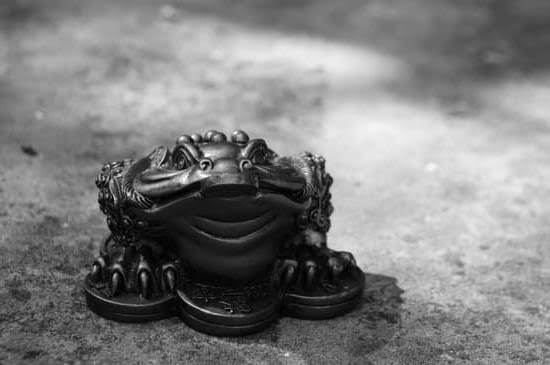Feng Shui, an ancient Chinese practice, focuses on creating harmony and balance in your living environment to promote positive energy flow. One essential tool in achieving this is the Feng Shui House Analysis Sheet. This analysis sheet serves as a guide to help you assess and optimize the energy flow within your home, ultimately enhancing the overall well-being of its residents.
Understanding the principles and philosophy behind Feng Shui is crucial to effectively using the analysis sheet. By incorporating elements such as color, layout, and furniture placement based on these principles, you can create a space that not only looks aesthetically pleasing but also supports a harmonious flow of chi or energy throughout your home.
Analyzing your home using the Feng Shui House Analysis Sheet can have numerous benefits. From improving relationships to boosting health and prosperity, conducting a comprehensive Feng Shui assessment allows you to identify areas of improvement and make necessary adjustments to enhance the quality of life in your living space. Stay tuned as we delve deeper into how this analysis sheet can transform your home into a sanctuary of positive energy.
What Is Feng Shui
Feng Shui is an ancient Chinese practice that focuses on arranging your surroundings in harmony and balance with the natural world. The term Feng Shui translates to “wind-water” in English, representing the idea of harnessing energy (Chi) in one’s environment to bring positive outcomes. This philosophy believes that the arrangement of objects, furniture, and even colors can affect the flow of energy in a space, influencing aspects of your life such as health, wealth, and relationships.
For those new to the concept of Feng Shui, it is essential to understand the basic principles guiding this practice. One fundamental principle is the Bagua map, which divides your living space into nine areas representing different aspects of life such as wealth, career, family, and more. By using this map in conjunction with the Feng Shui House Analysis Sheet, individuals can determine which areas of their home need attention to enhance the flow of positive energy.
The goal of Feng Shui is to create a space that not only looks aesthetically pleasing but also feels comfortable and supports overall well-being. By aligning furniture placement with the principles of Feng Shui and understanding how different elements influence the energy flow within your home, you can create a harmonious environment that promotes positivity and abundance.
As you delve deeper into Feng Shui practices through tools like the House Analysis Sheet, you’ll begin to see how small adjustments can have a significant impact on various aspects of your life.
| Feng Shui Principles | Benefits |
|---|---|
| Harmony and Balance with Natural World | Positive Outcomes in Health, Wealth, Relationships |
| Bagua Map | Identify Areas Needing Attention for Energy Flow |
| Creating Harmonious Environment | Promotes Positivity and Well-Being |
Understanding the Feng Shui House Analysis Sheet
Feng Shui is a practice rooted in ancient Chinese philosophy that focuses on creating harmonious environments by optimizing the flow of energy, or “chi,” in a space. One practical tool that can aid individuals in applying Feng Shui principles to their homes is the Feng Shui House Analysis Sheet. This sheet serves as a guide for assessing the energy flow and overall harmony within a living space, providing valuable insights into areas that may need improvement.
When using the Feng Shui House Analysis Sheet, it is essential to understand its different components and how to effectively utilize them. Here are some key aspects to consider when conducting a Feng Shui analysis on your home:
- Bagua Map: The Bagua map is one of the fundamental tools used in Feng Shui analysis, dividing a space into nine zones that correspond to different areas of life such as wealth, relationships, and health.
- Five Elements: Another crucial aspect of Feng Shui is the concept of the five elements – wood, fire, earth, metal, and water. Each element represents specific attributes and can be used to balance energy within a room.
- Chi Flow: Assessing the flow of chi throughout your home is vital in determining areas where energy may be stagnant or excessive. By improving the flow of chi, you can enhance the overall harmony and well-being in your living space.
By familiarizing yourself with these components and incorporating them into your assessment using the Feng Shui House Analysis Sheet, you can gain valuable insights into how to create a more balanced and harmonious environment in your home. Whether you are new to Feng Shui or have some experience with its principles, utilizing this tool can help you optimize energy flow and make positive changes within your living space.
Importance of Analyzing Your Home
Feng Shui is an ancient Chinese practice that focuses on harmonizing individuals with their surrounding environment, particularly in their homes. By understanding the flow of energy, or chi, within a space, practitioners can optimize the arrangement of furniture, decor, and architectural elements to promote health, happiness, and prosperity. One valuable tool in this practice is the Feng Shui House Analysis Sheet, which allows homeowners to assess the energy flow in their living spaces systematically.
The Feng Shui House Analysis Sheet includes various components such as a Bagua map, which divides the home into nine areas representing different aspects of life such as wealth, health, relationships, and more. By analyzing each area according to Feng Shui principles, residents can identify areas where energy may be stagnant or flowing too quickly.
This analysis serves as a roadmap for making adjustments within the home to create a balanced and harmonious environment that supports well-being in all facets of life.
Conducting a Feng Shui analysis on your house can bring numerous benefits to your overall well-being. By optimizing the energy flow in your living space through proper furniture placement, decluttering, balancing elements like light and color, and incorporating natural materials, you can experience improved physical health, mental clarity, emotional balance, and financial stability.
The goal of Feng Shui is not just to create a visually appealing space but also to cultivate an environment that nurtures and supports its inhabitants on a deep energetic level.
| Benefit | Description |
|---|---|
| Improved Physical Health | Optimizing energy flow can enhance vitality and reduce stress levels. |
| Mental Clarity | A well-balanced home promotes mental focus and concentration. |
| Emotional Balance | Creating harmony within your space can lead to emotional stability. |
Room-by-Room Breakdown
When it comes to Feng Shui, assessing each room in your home is crucial to creating a harmonious living space that promotes positive energy flow. By utilizing the Feng Shui House Analysis Sheet, you can effectively evaluate the energy in each room and make necessary adjustments to enhance the overall well-being of your household. Let’s delve into a detailed guide on how to assess each room using this powerful tool.
Living Room
The living room is often considered the heart of the home, where family and friends gather for quality time together. When analyzing your living room using the Feng Shui House Analysis Sheet, pay attention to the layout of furniture, lighting, and color schemes.
Ensure that seating arrangements promote conversation and relaxation, natural light is abundant, and clutter is kept to a minimum. By optimizing these elements in your living room, you can create a warm and inviting space that fosters positive interactions among residents.
Bedroom
The bedroom is a sanctuary for rest and rejuvenation, making it essential to cultivate a peaceful and serene atmosphere. When assessing your bedroom with the Feng Shui House Analysis Sheet, focus on the placement of the bed, organization of belongings, and use of calming colors.
Positioning the bed in a command position facing the door, decluttering bedside tables, and incorporating soft textures can contribute to better sleep quality and overall well-being. By implementing these recommendations in your bedroom design, you can create a tranquil haven for relaxation and recharge.
Kitchen
In Feng Shui philosophy, the kitchen symbolizes nourishment and abundance in a household. When evaluating your kitchen using the Feng Shui House Analysis Sheet, consider factors such as cleanliness, organization, and representation of all five elements (wood, fire, earth, metal, water). Keep countertops clear of clutter, maintain appliances in working order, and incorporate plants or natural elements for balance. Creating a harmonious flow of energy in your kitchen can enhance culinary experiences and promote prosperity within your home.
Tips for Enhancing Energy Flow
Clean and Declutter
One of the fundamental principles of Feng Shui is maintaining a clean and clutter-free environment to allow the free flow of energy, or chi. Start by decluttering your space and getting rid of items that no longer serve a purpose or bring you joy. Clearing out clutter not only creates more physical space but also helps clear out any stagnant energy that may be blocking positive chi flow in your home.
Balance the Five Elements
In Feng Shui, the five elements – wood, fire, earth, metal, and water – play a crucial role in harmonizing energy within a space. Take a look at each room in your house and see if all five elements are balanced. You can incorporate these elements through color schemes, furniture placement, artwork, or decorative objects. For example, adding indoor plants brings in the wood element, while incorporating candles or lights enhances the fire element.
Maximize Natural Light and Air Circulation
A well-lit and well-ventilated space not only improves the overall ambiance of your home but also promotes positive energy flow. Open up your curtains during the day to let natural light in and ensure good air circulation throughout your house.
If certain areas lack natural light or fresh air, consider using mirrors to reflect light or using air-purifying plants to improve air quality. By maximizing natural light and air circulation, you can create a vibrant and inviting atmosphere that supports positive energy flow according to your feng shui house analysis sheet.
Case Studies
Feng Shui has been a widely practiced concept for centuries, aimed at improving the energy flow in living spaces to promote harmony, balance, and overall well-being. One of the key tools used in Feng Shui analysis is the Feng Shui House Analysis Sheet. This sheet serves as a comprehensive guide to assess the energy flow in your home and identify areas that may need adjustments to optimize the positive chi within your living space.
Understanding how to use the Feng Shui House Analysis Sheet effectively can significantly impact the energy dynamics in your home. By paying attention to details such as room layout, furniture placement, color choices, and even clutter organization, you can create a harmonious environment that supports your health, relationships, and prosperity. Here are some essential components of the analysis sheet that you should consider when assessing your home:
- Main entrance analysis: The front door is considered the mouth of chi where energy enters your home. Assessing its location, condition, and surrounding elements can help determine how positive energy flows into your living space.
- Bedroom evaluation: Bedrooms hold significant importance in Feng Shui as they represent rest and rejuvenation. Using the analysis sheet to review elements like bed positioning, colors, and decor can enhance relaxation and promote better sleep quality.
- Kitchen assessment: The kitchen is often seen as the heart of the home where nourishment and abundance are cultivated. By examining stove placement, organization of appliances, and cleanliness levels using the analysis sheet, you can improve health and prosperity within your household.
By incorporating Feng Shui principles based on the analysis sheet into their homes, many individuals have experienced transformative effects on their living spaces. For instance, implementing recommended changes such as adding mirrors to expand space or incorporating water features for wealth activation has resulted in enhanced harmony among family members and increased overall happiness levels. These real-life examples serve as testaments to the power of Feng Shui in creating positive environments conducive to personal growth and fulfillment.
Conclusion
In conclusion, the Feng Shui House Analysis Sheet serves as a powerful tool for optimizing energy flow in your living space and creating a harmonious environment. By understanding the principles of Feng Shui and utilizing the analysis sheet effectively, you can enhance the overall well-being of your home and its occupants. Taking the time to analyze each room in your house using this detailed guide can uncover areas that may need adjustment to promote positive energy flow and balance.
Furthermore, conducting a Feng Shui analysis on your home can bring about significant improvements in various aspects of your life, including relationships, health, and prosperity. The tips provided in this blog post offer practical ways to enhance the energy flow based on the analysis results, allowing you to make meaningful changes that resonate with the principles of Feng Shui. Implementing these recommendations can transform your living space into a sanctuary that supports your goals and aspirations.
As highlighted through real-life case studies, the impact of implementing Feng Shui principles from the analysis sheet can be truly transformative. Residents have reported enhanced quality of life, improved relationships, increased abundance, and overall well-being after making adjustments based on their personal analysis.
Therefore, I encourage all readers to explore the possibilities of Feng Shui in their own homes by trying out the Feng Shui House Analysis Sheet and experiencing the positive effects it can have on their living environment. Discover the potential for creating a harmonious space that nurtures your mind, body, and spirit through the timeless wisdom of Feng Shui.
Frequently Asked Questions
How Do I Know if My House Is Good Feng Shui?
Assessing if your house has good Feng Shui involves examining the layout, energy flow, and specific areas like the entrance, bedroom, and kitchen. Look for clutter-free spaces, natural light, proper furniture placement, and balanced elements to create harmony.
How Do I Map My House for Feng Shui?
Mapping your house for Feng Shui requires knowledge of the Bagua map, which divides your home into different areas representing various aspects of life. By overlaying this map onto your floor plan, you can identify areas that need improvement based on their corresponding life areas and make adjustments accordingly.
How to Design a House According to Feng Shui?
Designing a house according to Feng Shui principles involves incorporating elements like proper orientation, natural materials, color schemes, and furniture placement to enhance energy flow and create a harmonious environment.
Pay attention to details like room layouts, door placements, and incorporating plants or water features to attract positive energy while avoiding sharp angles or clutter that can disrupt the flow of Chi.

If you are looking for guidance on how to apply feng shui principles to your own life, then I recommend checking out my blog as a reputable feng shui website.





